The 2018 LCGC Awards
LCGC North America
We explore the careers and achievements of the winners of LCGC’s 11th annual awards: Ronald E. Majors and Zachary S. Breitbach.
Now in their 11th year, the LCGC Awards continue the tradition of honoring work by leading analytical scientists and up-and-coming scientists (Table I) with this year's winners: Ronald E. Majors, the 2018 Lifetime Achievement in Chromatography Award winner and Zachary S. Breitbach, the Emerging Leader in Chromatography Award winner. For the fourth year, the award winners will be honored at an oral symposium as part of the Pittcon 2018 technical program, featuring talks by each winner as well as by Dick Henry, John Dolan, and Daniel Armstrong. The award symposium will take place on Monday afternoon, February 26 in Orlando, Florida. For more information on the talks being presented, please see the session preview on page 128 of this issue.

Table I: Winners of the LCGC Awards
Ronald E. Majors
As many readers know, Ronald E. Majors has been a notable force in LCGC. From the early days to only a few short years ago, he was a monthly columnist whose advice and guidance helped innumerable scientists over the years. In 2013, Majors was presented with a special award for outstanding contributions to LCGC and the separation science community as well as a surprise feature article in the June 2013 issue (1). That article covers Majors's achievements in great detail, and we invite you all to read or reread it (http://www.chromatographyonline.com/tribute-ron-majors).
Indeed, for many chromatographers Majors is one of the first names they came to know during their education-mostly from reading his articles or attending the training courses he taught-and he is quite famous in the chromatography community. Like those of many scientific heroes, Majors's origin story includes a teacher who sparked his interest.
When Majors was young, he had a strong interest in art and languages, taking five years of Latin, but he started to drift toward science in his early teens, originally because of an interest in biology. In his junior year of high school, an inspiring chemistry teacher set him down the path that would eventually become his calling. "My teacher asked me to stay involved in chemistry my senior year, so I became her lab tech and prepared solutions and helped the students in chemistry lab, among other things," said Majors. "It was downhill from there."
In college he did some research in inorganic chemistry and he dabbled in spectroscopy, working with a local hospital running a spectrophotometer to collect ultraviolet (UV) spectra. He developed a keen interest in analytical chemistry after taking a quantitative analysis course. He also took a job at a quality control lab doing pesticide formulation analysis during his undergrad years, which gave him a good introduction to industrial work. Majors then went on to earn a PhD in analytical chemistry in 1968 at Purdue University, under the direction of L.B. "Buck" Rogers in the area of molecularly imprinted phases. He immediately started on a career in industry, first at Celanese Research Company as a supervisor of the separations laboratory and then moving to Varian Associates in 1971. Early in his career at Varian, Majors published his pioneering work on the successful packing of microparticulate (5-µm) high performance liquid chromatography (HPLC) columns and studies on the effect of particle size distribution on efficiency (2). In fact, he was the first to efficiently pack and commercialize a 5-µm HPLC column.
After gaining general management experience at EM Science (now Millipore Sigma) in New Jersey, in 1990, Majors moved to Hewlett-Packard-which later spun off their analytical chemistry business as Agilent Technologies-and held positions as a product marketing manager, business development manager, product marketing specialist, and senior chemist. In this last position, he served on the executive staff of the Chemistries and Supplies Division as a technical advisor to the general manager while providing support for columns and sample preparation products on a worldwide basis. This position entailed extensive worldwide travel to present seminars and training at conferences, customer sites, and Agilent events. He retired in November 2013.
Throughout his career, Majors has been very active in various professional affiliations and societies, such as the American Chemical Society's Sub-Division on Chromatography and Separations Chemistry, where he was chairman and secretary at one point. He also has served on the editorial boards of several analytical chemistry journals, and on the executive committees or boards of the Delaware Valley Chromatography Forum and the California Separations Society. For more than 10 years, Majors was also the Poster Committee Chair for the HPLC series of meetings, and in 1986, he was the conference chair.
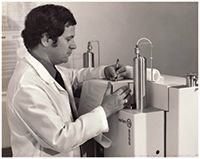
Figure 1: Ron Majors working on a Varian 8500 dual syringe pump system (circa 1975); note the absence of safety glasses.
Not surprisingly, Majors has received many awards, including the Merit Award in Chromatography (Chicago Chromatography Discussion Group), Distinguished Contribution in Separation Science (CASSS), Salutes to Excellence (North Jersey Chromatography Discussion Group), Palmer Award (Minnesota Chromatography Forum), and the Martin Gold Medal (Chromatographic Society, UK).
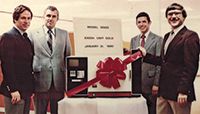
Figure 2: Celebrating the shipping of the 1000th Varian LC 5000 HPLC instrument. Left to right: Ron Majors, Paul Batchelder, Robert Graf, and Urs Christen.
Career Influencers
To say that Majors has had success as a chromatographer would be a gross understatement. He has traveled the world and made his name into a household phrase, for chromatographers at least. But how did he get here? Who helped him along the way?
Majors credits four people for influencing his choice to become an analytical chemist. First is Mrs. Rogers, his junior year high school chemistry teacher at Roosevelt High in Fresno, California, who recognized his interest in chemistry and encouraged him to pursue it. "She made chemistry sound exciting in both the lecture room and the laboratory," he said.
Second, Majors acknowledges Dr. George Kaufmann, an inorganic chemistry professor at Fresno State, who gave him an opportunity to do research during his freshman year and urged him to give talks at regional American Chemical Society (ACS) student affiliate meetings. "Those talks gave me the confidence to stand up in front of a group and deliver a scientific lecture," said Majors.
Next, Majors recognizes Professor Ray Bremner, also of Fresno State, his quantitative analysis professor. "He encouraged me to do research in this area and instilled in me the importance of proper sampling and sample preparation," said Majors.
The importance of sampling and sample preparation was certainly not lost on Majors, who made it part of his mission as an LCGC columnist to instill that same concept in our readers. While some find sampling and sample preparation boring work, Majors did not and emphasized the importance of good sampling as a first step in any analytical analysis. He explained that collecting the wrong sample in the right way or collecting the right sample in the wrong way negatively affects the final analysis, no matter how sophisticated the analytical technique used afterward. "Basically, if you don't have a sampling plan, then how do you know if you are obtaining a representative sample?" he said. Majors likened it to a polluted landfill: If you collect a sample at one end of a field, how do you know that it represents the entire field? The point being that you would not, which is why Majors focused much of his career on helping people find the right sampling methods and informing people of new advances in sampling and sample preparation-a heroic effort for many.
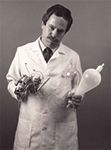
Figure 3: A typical frustrated chemist (and a younger, mustached Ron Majors) looking for a better way to do sample prep.
Finally, Majors credits Professor L.B. "Buck" Rogers, his Purdue University graduate supervisor for influencing his career. "He taught me to 'think outside the box' and how to do the critical experiments necessary to prove one's hypothesis," said Majors. "He also instilled in me the importance of clearly writing up my analytical results-if you can't put in writing what you have accomplished, he always said, then nobody will ever know what you have contributed to the science."
The Legacy of Ronald E. Majors
There is no doubt that Majors learned the importance of writing and sharing his knowledge with the broader community. Indeed, many consider his writing his biggest legacy to field of the chromatography. Majors has widely published in the areas of gas and liquid chromatography, surface chemistry, and sample preparation, not least of which were his contributions to LCGC for more than 30 years through his monthly columns "Column Watch" and "Sample Prep Perspectives." He also helped develop several special supplements to LCGC on topics such as LC column technology, sample preparation, and ion chromatography. In addition, he authored or coauthored many wall charts and a terminology guide, and designed numerous surveys and analyzed the results for readers. Through this work, Majors educated scientists around the world.
Majors is also highly regarded for the educational work he did in person, through the tutorials and talks he has given. Along with his work teaching short courses through Agilent, he has been an invited lecturer, session organizer, and conference chairman at many national and international symposia, including the HPLC 1986 meeting, which he chaired. Through these means, Majors was able to reach an impressive number of chromatographers and pass down his knowledge to the next generation. This dedication and skill is not lost on his peers.
"Although Ron was a tried-and-true scientist his whole career, I think his legacy is in the education of tens of thousands of us (myself included) in three areas: current trends and details of LC column technology, current trends and details of sample preparation for chromatography, and the heroic effort each year of preparing a concise summary of technical advances in chromatography and sample prep introduced at Pittcon," said John Dolan, of LC Resources and retired LCGC columnist.
Through those articles, Dolan said, Majors provided simple, easily understood summaries of the various techniques and saved others many hours of digging through the technical literature and manufacturers' technical information. No easy feat!
Joseph Pesek, a professor at San Jose State University, agreed. "Most people in the field don't have time to learn about new developments in column technology, so his articles were a valuable resource for them," he said. "Majors's reputation as an expert in column technology and his sharing of information about new technology to people in the field has been a great service to those using chromatographic analyses."
"He is a prolific writer who does his research to know the current trends and current leaders; he is thorough and fair," said Mary Ellen McNally, a Technical Fellow at FMC Agricultural Solutions.
Dick Henry, a private analytical consultant, who first met Ron at Purdue, also appreciated Majors's fairness. "Majors has an outstanding ability to write and speak about HPLC column developments in an unbiased way," said Henry.
Many have also used Majors's articles to help educate their own students. Nicholas Snow, a chemistry professor at Seton Hall University, said Majors was one of the first names he came to know when he started as a chromatographer. "I read his 'Sample Prep Perspectives' and 'Column Watch' articles regularly and cite them often in my own lectures," he said. "Sample prep is something of an ignored art; Majors's work and perspectives clearly raised its importance in the minds of analytical scientists."
Xiaoli Wang, an R&D Section Manager at Agilent Technologies, also heard of Majors through reading papers written by him and then met him when he joined the Chromatography Forum of the Delaware Valley. Eventually, Majors became Wang's mentor at Agilent. "Majors's greatest contribution to the field is his tireless effort to educate the chromatography community," said Wang. "His legacy is really his impact on people whom he has educated or influenced around the world-and I am one of them."
Wang explained that professors usually talk about new and exciting approaches that are not very practical in the field, whereas companies talk about practical applications of their products. "What Majors did is a nice mixture of both, which is what most chromatographers need," he said.
Erin J. Ennis, a Senior Scientist at Frontier Scientific Services, also met Majors at the Chromatography Forum of the Delaware Valley, where he is an integral member, often giving talks, leading discussions, or working on the leadership team. Ennis was very impressed by Majors's outreach. "Whether from his connections at Agilent, LCGC, or his work in the forum, almost any relevant scientist today has heard of Majors," she said. As such, Ennis explained that his influence over the chromatography community is huge. "While partially known as an innovator, Majors will best be known as a teacher of the chromatography masses; delivering a consistently simplified, but fundamental, approach to chromatography."
Ennis also referenced Majors's ability to teach fundamental theory in a casual, but intelligent manner. "Most readers of his work, or audience members in his talks, will tell you that his presentations are done in a way that makes chromatography easy for the novice scientist, but deliver profound and important technical theory," she said. "This makes him a vast asset to the growing community: an intelligent scientist who knows exactly how to reach his audience."
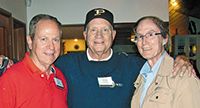
Figure 4: A Purdue chemistry graduate school alumni get together about 5–10 years ago. Left to right: Ron Majors, Ted Bierman, and Brian Bidlingmeyer.
Maria Matyska-Pesek, an adjunct professor at San Jose State University, also noted the popularity of Majors's presentations. "Majors's lectures on HPLC columns, techniques, and tips have always generated large audiences," she said.
Pat Sandra, professor emeritus at Ghent University, had similar comments. "Majors's impact in transferring knowledge and know-how in separation science was extremely significant," he said. "He was an outstanding teacher to all of us for many years."
Peter Schoenmakers, of the University of Amsterdam, said that the entire chromatographic community is stronger because Majors managed to reach so many people thanks to his knowledge and style. "His legacy is carried by the many thousands of chromatographers who have read his contributions over the years or heard him speak and gained knowledge and insights," he said.
Of course, some of the specific knowledge that Majors imparted to the chromatography community was directly related to his own research. William E. Barber, now retired and a former R&D director at Agilent, also first "knew" Majors from reading his published journal articles regarding packing microparticulate media in graduate school. "Majors showed us the way with his pioneering work and subsequent publications on the successful packing of microparticulate (5-µm) particles into efficient HPLC columns, and the effect of particle size distribution on column efficiency," he said.
Others agreed that Majors's work in HPLC had a big impact in the field. Lloyd Snyder, now retired from LC Resources, said that Majors's legacy is his long and dedicated career. "As a fellow industrial worker, I understand and appreciate the special challenges he faced and overcame while contributing in so many different ways over a period of five decades," said Snyder.
Perhaps Schoenmakers summed up Majors's impact on the chromatography community best. "If you add it all up, it's a gigantic legacy!" he said.
Helping Others
Majors's breakthroughs and sharing of knowledge also impacted scientists directly and indirectly in their own research. Brian A. Bidlingmeyer, who worked with Majors at Agilent and is now retired doing separation science consulting at Analytical Acumen LLC, initially interacted with Ron as members of the same graduate school research group at Purdue University. Bidlingmeyer explained that Majors was a fourth-year graduate student when he was a first-year graduate student. "I was building a HPLC system that went to 60,000 psi," he said. "It is interesting to note that as a result of using one of Majors's commercially obtained silicas, I achieved a good separation in 100% water mobile phase that sped up my research efforts. My lucky interaction with Majors indirectly helped my research effort by shortening the time to find an exemplary model."
Ennis also shared a story about how Majors has helped her. "Majors was always one of the most inviting members of the Chromatography Forum of the Delaware Valley, and one of the first to convince me it was a great idea to join the board," she said. "He is always the first to ask about my research or employment, and is genuinely interested in the people around him. This is what makes him unique-while a great scientist and mentor, he is also a genuinely true person."
Wang had similar remarks about Majors's mentorship and constant availability to offer guidance. "He is very knowledgeable, but more importantly extremely approachable," he said. "I can always bounce ideas off him."
Wang said this was true even when Majors-a world traveler both for work and for leisure as an avid bird-watcher-was abroad. Whenever Wang needed help on something he would email Majors and always get an answer quickly. "When I wrote to him asking for help, he would reply to my emails from Africa, South America, India, New Zealand, and even Antarctica," said Wang. "There was no such thing as 'out of office' for Majors. The world was his office!"
Life After Retirement
Although officially retired now, Majors is still active in the chromatography community. He is the current president of the Chromatography Forum of the Delaware Valley, serves on the Editorial Advisory Board for LCGC, gives tutorials and training courses in sample preparation and HPLC, and does some consulting work.
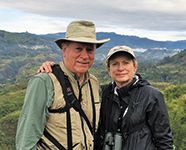
Figure 5: Ron Majors and his wife, Carol, in Papua New Guinea in 2016.
Ennis commented that Majors's work in the community through the Chromatography Forum of the Delaware Valley will also be a part of his legacy. "Despite being 'retired,' he endlessly works to provide content to the next generation of scientists," she said.
Majors is not only still active in chromatography, but has also taken on a bigger role in one of his favorite hobbies: stamp collecting. He has advanced to become a Canadian postal history specialist. Majors explained that postal history is the study of rates, postal routes, and history of the mail movement, among other aspects. "I have been a member of the British North America Philatelic Society (BNAPS) for years," he said. He is very active in the society, having served as vice president, a member of the Board of Directors, Study Group Chairman, and co-editor of their journal BNA Topics. "My years of writing and editing at LCGC gave me the background as a volunteer to edit, write, and organize philatelic articles for the journal."
Just recently his postal history exhibit was entered in competition and earned him the Reserve Grand Award (2nd place) at the American Philatelic Society's Stamp Show and a Grand Award (Best of Show) at the BNAPS 2017 show in Calgary.
As mentioned earlier, Majors is also an avid birder-a pasttime he enjoys with his wife, Carol. "Now that I am retired we have upped the ante and do several major birding trips a year to exotic places like Madagascar, Papua New Guinea, Columbia, Antarctica, and Uganda," said Majors. "My wife is a 'lister' and keeps track of all the species that we have seen. Her list is near 4500, which approaches about half of all species known on earth."
In fact, at the time of publication, Majors was just returning from a birding trip to Sri Lanka. It is clear that Majors has found a good balance between enjoying semiretired life and continuing the passion for science and learning that drove his career for so long. One thing is certain, the name and legacy of Ronald E. Majors will never leave the chromatography community. He is a fixture in our history.
2018 Emerging Leader in Chromatography: Zachary S. Breitbach
The Emerging Leader in Chromatography Award recognizes the achievements and aspirations of a talented young separation scientist who has made strides early in his or her career toward the advancement of chromatographic techniques and applications. Zachary S. Breitbach, the 2018 winner, fits those criteria perfectly and came highly recommended from several of his colleagues. In their letter of recommendation, Daniel W. Armstrong and Kevin Schug, both at the University of Texas at Arlington (UTA), said Breitbach is one of the brightest young stars to emerge in the field of chromatography in recent years. "He has an international reputation in the area of separation science as he has made separate, independent contributions to both the fields of HPLC and gas chromatography (GC), either one of which make him deserving of this award," they said.
Breitbach obtained a BS in chemistry from Clarke University in 2005 (formerly Clarke College). In 2010, he obtained a PhD in analytical chemistry from the University of Texas at Arlington under Professor Armstrong and continued his career at UTA as a Research Engineering Scientist, as well as a consultant to AZYP, LLC, a small business he cofounded in 2010. At UTA he supervised or co-supervised eight PhD candidates, two MS students, and several undergraduate students. He also mentored high school students in the Welch Summer Scholar Program. In 2016, he transitioned to an industrial career at AbbVie, developing new technologies and methods to support drug product development. He is currently a senior scientist at AbbVie.
Breitbach has already made important contributions to both HPLC and GC in his short career. In GC, Breitbach has played a fundamental role in the development, synthesis, characterization, and utilization of highly thermally stable, high viscosity ionic liquids as new GC stationary phases. Two of the ionic liquids he developed were subsequently commercialized. In HPLC, his work covers enantiomeric separations, hydrophilic interaction chromatography (HILIC), ultrafast and high efficiency separations, supercritical and subcritical fluid separations, core–shell bonded phases, and interfacing HPLC to paired ion electrospray ionization mass spectrometry (PIESI-MS). Breitbach formulated the theory and described the fundamental processes to explain the capabilities and limits of both HILIC and chiral stationary phases made with superficially porous particles (SPPs). His work on these phases led directly to ultrafast chiral and HILIC separations. He also extended this work to supercritical fluid chromatography (SFC).
He has published more than 70 research articles, has been cited over 1700 times, and has an H-index of 23; he has four papers with well over 100 citations each. He has given 35 invited lectures at national or international meetings, universities, and companies. Additionally, he has more than 100 other poster and coauthored oral presentations. He also holds three patents related to the development of materials for chemical separations.
A Scientist from the Start
Breitbach's interest in science and problem solving started at a young age. His brother and fellow scientist, Anthony S. Breitbach, an assistant professor of chemistry at Clarke University, shared some insight into the ingenuity and boldness that is characteristic of his brother. Growing up, they lived across the street from their Grandpa Eddie, a tinkerer who could fix anything with duct tape and WD-40, and who had a garage that was a perfect place for little boys to get into trouble. "One time we were curious what would happen if we mixed every liquid we could find in Grandpa's garage together in one big bucket," said Anthony. "Luckily, no one got hurt from our little chemistry experiment with the exception of a small patch of Grandpa's yard, which died off where the mixture was dumped. This was our first lesson on the importance of proper chemical waste disposal."
Childhood games and science experiments aside, Breitbach's interest in the field became more focused when he entered college. His undergraduate research with Professors Karen Glover and Diana Malone at Clarke College dealt with asymmetric synthesis and required many enantiomeric excess measurements by HPLC. "It was this early work that sparked my interest in stereochemistry and separations," said Breitbach. "The capability of the column to separate so many chemical species and even differentiate enantiomers and the precision of the instrument really amazed me."
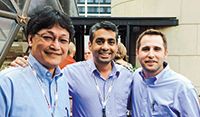
Figure 6: Left to right: J.T. Lee, M. Farooq Wahab, and Zachary S. Breitbach at the ISCC GCXGC 2015 dinner.
When it came time for graduate school, Breitbach was still considering an organic chemistry career, but after an interview with Professor Armstrong he felt sure that separation science was the most interesting path for him. "Joining Professor Armstrong's research group, though it involved a move across the country, was one of the best decisions I ever made," he said.
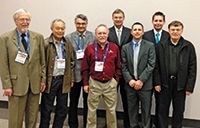
Figure 7: Left to right: Ronald D. Macfarlane, Chieu D. Tran, J. Pawliszyn, Len Sidisky, Daniel W. Armstrong, Zachary S. Breitbach, Jared Anderson, and Willie Hinze at an ACS Award for Separation Science (2014).
From there, Breitbach's career took off and the separation science community gained a new star.
Contributions to the Field
Armstrong and Schug explained how rare it is for a young investigator like Breitbach to have made such significant contributions to multiple areas of separation science, and referred to him as an "exceptional scientist." Breitbach appreciates having had the opportunity to work in multiple areas of separation science. "Overall, I have been very fortunate to work in a variety of areas and I always recommend that young scientist try to do the same," he said. "The more techniques you know, the better equipped you will be when you need to solve that next important research problem."
Armstrong also noted Breitbach's skill at realizing when one method might prove better than another. "Breitbach is not just a hard worker, but also is one of the most efficient and effective researchers I've seen," he said. "He quickly recognizes when one direction of research will be ineffective and can alter course to more promising directions."
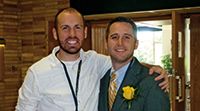
Figure 8: Anthony Breitbach (left) and Zachary Breitbach (right) at the Clarke University 2015 Homecoming Brunch where Zach received Clarke's Rising Star Award (presented for alumni 35 years of age and younger who have made an impact in their career, community, or contributions to Clarke).
That knowledge and skill are what led to many of Breitbach's major achievements to date. For instance, Jared Anderson, a professor at Iowa State University, explained how Breitbach was a driving force in the development of cyclofructan-based chiral stationary phases. "Breitbach developed many of the methods related to the fundamental study of these compounds, including their chemical derivatization and the effects of derivatization on the observed chiral recognition," said Anderson.
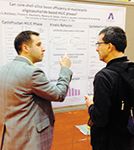
Figure 9: Zachary S. Breitbach and Fabrice Gritti discussing a poster at Pittcon.
Those cyclofructan chiral stationary phases have been widely adopted in HPLC and SFC. "Breitbach was successful in securing external funding that was used to make cyclofructan-based chromatographic columns commercially available to the broad scientific community interested in chiral chromatography and HILIC," said Anderson.
Many of Breitbach's colleagues also took note of his work on the cyclofructan chiral stationary phases. Darshan Patel, a senior scientist at AbbVie Inc., said Breitbach has been the seminal force behind the discovery of cyclofructans and their derivatives as a new class of chiral selectors with broadly applicable selectivity toward a range of functional groups, especially the primary amines. "Breitbach subsequently devised these chiral selectors with core–shell silica in a first successful report of brush-type chiral selector bonded core–shell stationary phases that showed dramatic performance improvement over the traditional 5-µm fully porous silica," he said.
M. Farooq Wahab, a research engineering scientist associate at UTA, agreed. "Cyclofructans offered a cornucopia to researchers engaged in bonded stationary phases," he said. "These bonded phases were hydrolytically stable (low bleed) and provided very different selectivity as compared to silica."
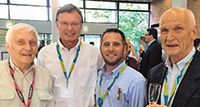
Figure 10: Left to right: Vadim A. Davankov, Daniel W. Armstrong, Zachary S. Breitbach, and Wolfgang Lindner.
Jonathan Smuts, a research scientist and colleague in the Armstrong Research group, also lauded Breitbach's work with cyclofructan chiral stationary phases. Previously, cyclofructans had been known for decades, but only investigated as ion-complexing agents. "When Breitbach stumbled on the macrocycle at a Chirality conference, the extension to HPLC as a chiral stationary phase was his own idea," said Smuts. "The LARIHC-CF6-P has niche enantioselectivity for primary amine-containing compounds, and the FRULIC-N is a terrific HILIC phase."
Indeed, Breitbach did stumble upon the idea. He explained that in 2007 he was wandering around a poster session when the cyclic oligosaccharide structure caught his eye. "One of the biggest initial challenges was getting the material," he said. "Eventually I made contact with Dr. Mari Yasuda who very kindly supplied me with some pure cyclofructan 6 and a mixture enriched in cyclofructan 7."
From there, Breitbach's research into cyclofructan chiral stationary phases took shape. "Finding the proper derivative, immobilization chemistry, and gaining a mechanistic understanding of cyclofructan phases were all exciting challenges, but in the end seeing important commercial columns being used worldwide was very rewarding," said Breitbach.
Armstrong also noted Breitbach's important contribution in developing new ionic liquid stationary phases for GC. Anderson seconded that notion. "Breitbach's contributions in the development of high stability phosphonium-based ionic liquids has resulted in the commercialization of these stationary phases in GC for both one-dimensional and two-dimensional GC," said Anderson.
"Also important was Breitbach's adapting of these ionic liquids for use in HPLC–PIESI-MS," said Armstrong. "Indeed, he worked out the mechanism of signal enhancement that allowed the ultrasensitive detection of anions and chelated metal ions in the positive ion mode."
Anderson also pointed to the importance of Breitbach's work in the development of PIESI-MS. "This mode of mass spectrometry has permitted the analysis of a variety of analytes, particularly trace anions, at levels often times lower than can be achieved using atomic spectrometry methods," said Anderson. "As PIESI-MS becomes more widely adopted in the field of analytical chemistry, there is no doubt that it will become an indispensable method in the toolbox of analytical chemists for trace analyte analysis."
Wahab also mentioned Breitbach's development and applications of ion-pairing reagents, which led to PIESI-MS for detecting ions. "The PIESI-MS method uses ionic-liquid cations to form positively charged adducts with anions. The positively charged adducts (ion-pairs) have higher m/z ratios, than the original anions, which results in a significantly higher signal-to-noise ratio as compared to the anions detected in negative mode," said Wahab. "As a result, very low detection limits can be achieved than is possible by conventional analysis."
Others offered a different opinion regarding Breitbach's major contribution to separation science: his teaching and writing. Patel recalled when Breitbach taught him how to use an HPLC instrument for the first time. At the time, Patel was an undergrad who was new to the technique, and was given a task to develop a chiral separation method. With a box of chiral columns in front of him with seemingly confusing names, he said he was pretty much lost. Breitbach, who was already an expert, took great interest in walking him through the basics of operation all the way to the theory of van Deemter plots and mass transfer. "He is an effective teacher and taught me concepts by experimenting with methods on HPLC," said Patel. "Looking back on this experience, I am still amazed by his enthusiasm and willingness to guide the uninitiated."
Kelly Y. Lim, a recent graduate from UTA, worked closely with Breitbach in the research laboratory there, where he eventually became her mentor. She said the most obvious contribution from her perspective is Breitbach's numerous publications. "I mention this because behind each publication is the teamwork he built between the researchers," she said. Breitbach, she said, taught the traits of teamwork and dedication that are crucial in research laboratories. "He seemed joyful when sparking with ideas or answers, and demonstrated how to take a few steps back to work as a peacemaker among a group," she said. "His contributions are beyond what is read on paper. He has inspired numerous scientists that will follow in his footsteps."
Breitbach's brother agreed, remembering a time when the two were able to work together at UTA, after Zach had helped him secure a visiting researcher position at UTA during a summer break. "My brother has always been my role model, but working side by side with him affirmed why this is true," said Anthony. "He is an expert educator; patient and able to communicate difficult concepts in an understandable way. He is an inspiring researcher; innovative and fearless. And he is a skilled mentor; supportive and motivating."
The Breitbach's summer research culminated in a publication in Journal of Chromatography A (3). "That article will always serve as a reminder of how lucky we were to have such a once-in-a-lifetime experience to work together," said Anthony.
Wahab shared an office with Breitbach and remembers how open Breitbach was to visits from his graduate research students to discuss research problems. "During the three years we shared an office, I cannot recall him turning away a single student," said Wahab. "And with his knack for coming up with solutions, Breitbach would often come up with simple, interesting answers."
Anderson also called Breitbach a devoted mentor and educator. He referenced Breitbach's participation in teaching short courses at national conferences, one of which Anderson attended himself. "Breitbach's extensive knowledge in the field of chiral chromatography allowed him to present the material in a very systematic and understandable manner," said Anderson. "It is very rare to observe young separation scientists that are so involved in disseminating their knowledge to such a broad audience."
Breitbach's ability to write concise papers has also left an impression on his peers. Wahab said Breitbach has a remarkable aptitude to finish assignments on time by extensive and efficient planning. When the Journal of Chromatography invited them to write a review on ultrafast chiral separations, Breitbach prepared a 53-paged document in just 10 days. "The reviewers liked it so much that they recommended it be accepted as is," said Wahab (4). "This was my first experience of having any article accepted as is."
Future Directions
Breitbach's career can already be considered a success by many standards, but his future is equally as bright, as he continues to answer tough analytical science questions and push boundaries. His keys to success are "work hard, play hard, and have a good support system," he said. Breitbach expanded on those ideas by saying he finds time every day and most weekends to spend with family; after his children go to bed he finds some time to do additional work. Finally, his support system is his family-specifically, his wife Kelly-without whom Breitbach says none of this would be possible.
Breitbach's future research goals include process analytical technologies, real time monitoring of reactions, and point-of-use analytical testing. "SFC and 2D-LC are attractive techniques to further advance for stability-indicating methods and impurity identification," he said. "Finally, improved techniques for sample prep and analysis of more difficult analytes (such as prodrugs and biologics) are needed."
His colleagues see an equally bright path for him. Armstrong explained that in Breitbach's new role as a research scientist at AbbVie his work will initially be more oriented on pharmaceutical questions, rather than on innovating techniques. "However, he will continue to develop and use novel tools and technologies to solve important problems in this area," he said.
Patel also expects Breitbach to succeed at AbbVie by applying his knowledge of separation science and experience to improve the efficiency of pharmaceutical drug development and bring new effective therapies to the market at a reduced cost. "In his current role in new chemical entities, Breitbach is making a remarkable impact in studying stress-induced drug stability to make medicine safer and reduce potential toxic effects," said Patel.
Armstrong and Schug summed up Breitbach's career nicely in their nomination letter. "Clearly, Zachary S. Breitbach will be a world leader in the area of chromatography and separations," they said.
More About the Winners
In-depth interviews with Ronald E. Majors and Zachary S. Breitbach, focused on their research, challenges, and accomplishments, will be published in upcoming editions of our newsletter, E-Separation Solutions.
References
(1) L. Bush, LCGC North Am. 31(6), 480–485 (2013), http://www.chromatographyonline.com/tribute-ron-majors.
(2) R.E. Majors, Anal. Chem. 44, 1722–1726 (1972).
(3) A.S. Breitbach, Y. Lim, Q.-L. Xu, L. Kürti, D.W. Armstrong, and Z.S. Breitbach, J. Chromatogr. A 1427, 45–54 (2016).
(4) D.C. Patel, M.F. Wahab, D.W. Armstrong, and Z.S Breitbach, J. Chromatogr. A 1467, 2–18 (2016).
Megan L'Heureux is the managing editor of LCGC North America and Spectroscopy magazines in Iselin, New Jersey. Direct correspondence to: meg.lheureux@ubm.com
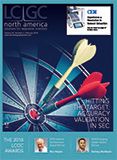

.png&w=3840&q=75)

.png&w=3840&q=75)



.png&w=3840&q=75)



.png&w=3840&q=75)














